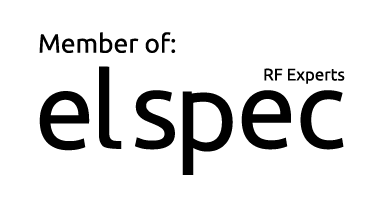
Facts About PTFE Coaxial Cables
Coaxial cables with low losses and wide temperature range performance typically rely on PTFE (Polytetrafluoroethylene) as an insulation material. At elspec, PTFE has been the most frequently used core material—alongside copper, silver, and steel—for over 32 years. With industry demands for precise and stable measurements becoming increasingly rigorous, PTFE remains a cornerstone in our high-frequency cable solutions.
PTFE is favored for its broad thermal range (from –269°C to over +250°C), low dielectric loss, and chemical stability, making it ideal for RF and microwave applications. Despite these advantages, PTFE exhibits unique behaviors under changing temperatures and pressures that require deep understanding—such as thermal expansion, permittivity drift, and memory effects.

Thermal and Electrical Behavior of PTFE
Recent research at elspec, led by RF expert Stefan Burger (DeltaGamma Consult), explored how PTFE behaves under laboratory conditions. The findings reveal:
Thermal Expansion: PTFE expands as temperatures rise, while its relative permittivity decreases. These opposing changes partly cancel each other out, but not entirely—resulting in phase drift.
Phase Shift: Between 10°C and 40°C, coaxial cables can exhibit 6° phase shift per GHz, potentially impacting signal timing.
Pressure Influence: PTFE expands more than metal shielding (typically copper or steel), which generates internal pressure. This pressure increases permittivity, helping stabilize signal behavior.
Material Memory: Mechanical stress during manufacturing or handling can affect PTFE’s structure. Proper annealing (e.g. heating to 250°C) helps relieve internal tension and improve repeatability.
Implications for Coaxial Cable Design
To reduce undesirable effects such as phase drift and signal delay, several solutions were proposed:
- Use of expanded PTFE (ePTFE) or foam PTFE to lower effective permittivity
- Incorporation of dielectric supports or air gaps to minimize permittivity variation
- FEM simulations to predict electrical length under pressure and temperature changes
PTFE remains unmatched in RF cable insulation, offering stability across extreme temperatures and minimal signal distortion — a key factor in precision measurement.
– Stefan Burger, RF Expert
Why This Matters
As measurement accuracy and stability become increasingly critical in sectors like aerospace, metrology, and quantum computing, understanding the behavior of PTFE in coaxial cables becomes a technical necessity.
This research ensures elspec continues to develop high-performance coaxial solutions with superior stability and minimized loss across a wide range of environmental conditions.


